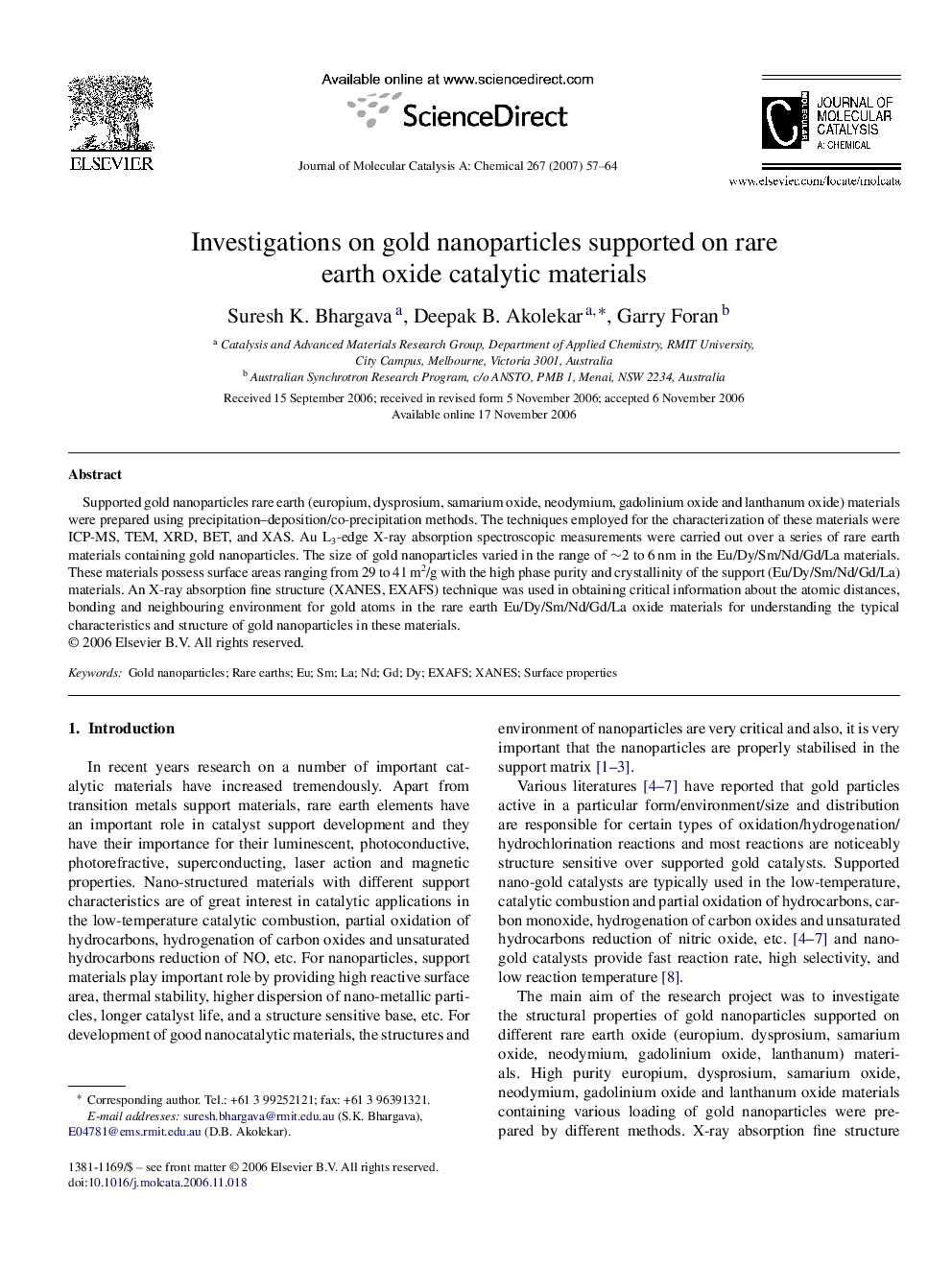| Article ID | Journal | Published Year | Pages | File Type |
|---|---|---|---|---|
| 68778 | Journal of Molecular Catalysis A: Chemical | 2007 | 8 Pages |
Supported gold nanoparticles rare earth (europium, dysprosium, samarium oxide, neodymium, gadolinium oxide and lanthanum oxide) materials were prepared using precipitation–deposition/co-precipitation methods. The techniques employed for the characterization of these materials were ICP-MS, TEM, XRD, BET, and XAS. Au L3-edge X-ray absorption spectroscopic measurements were carried out over a series of rare earth materials containing gold nanoparticles. The size of gold nanoparticles varied in the range of ∼2 to 6 nm in the Eu/Dy/Sm/Nd/Gd/La materials. These materials possess surface areas ranging from 29 to 41 m2/g with the high phase purity and crystallinity of the support (Eu/Dy/Sm/Nd/Gd/La) materials. An X-ray absorption fine structure (XANES, EXAFS) technique was used in obtaining critical information about the atomic distances, bonding and neighbouring environment for gold atoms in the rare earth Eu/Dy/Sm/Nd/Gd/La oxide materials for understanding the typical characteristics and structure of gold nanoparticles in these materials.
Graphical abstractSupported gold nanoparticles rare earth (europium, dysprosium, samarium oxide, neodymium, gadolinium oxide and lanthanum oxide) materials were prepared and characterised by routine and sophisticated techniques. Au L3-edge X-ray absorption spectroscopic measurements were carried out over a series of rare earth materials containing gold nanoparticles. The size of gold nanoparticles varied in the range of ∼2 to 6 nm in the Eu/Dy/Sm/Nd/Gd/La materials in obtaining critical information about the atomic distances, bonding and neighbouring environment for gold atoms. These materials possess medium surface area between 29 and 41 m2/g with the high phase purity and crystallinity of the support (Eu/Dy/Sm/Nd/Gd/La) materials. Figure optionsDownload full-size imageDownload as PowerPoint slide
